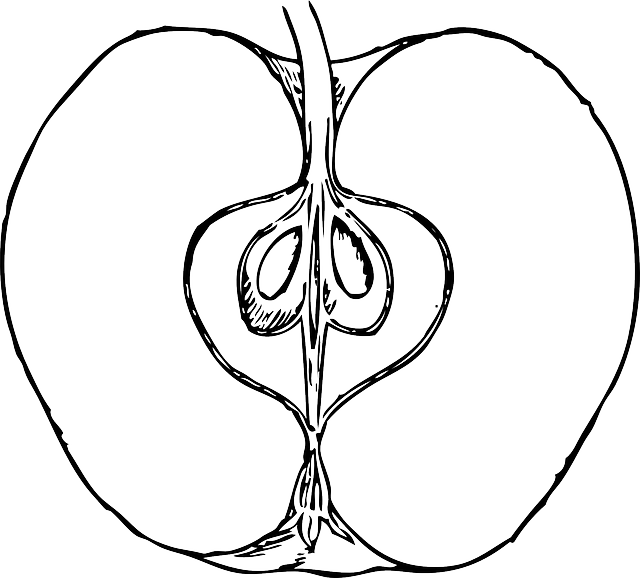پرية (فلسطين)
پرية Perea أوPeraea (باليونانية: Περαία, "the country beyond"), was the portion of the kingdom of Herod the Great occupying the eastern side of the Jordan River valley, from about one third the way down from the Sea of Galilee to about one third the way down the eastern shore of the Dead Sea; it did not extend very far to the east. Herod the Great's kingdom was bequeathed to four heirs, of which Herod Antipas received both Perea and Galilee. He dedicated the city Livias in the north of the Dead Sea. في 39 م، Perea and Galilee were transferred from disfavoured Antipas to Agrippa I by Caligula. With his death in 44 CE, Agrippa's merged territory was made province again, including Judaea and for the first time, Perea. From that time Perea was part of the shifting Roman provinces to its west: Judaea, and later سوريا الفلسطينية، فلسطين وPalaestina Prima. Attested mostly in Josephus' books, the term was in rarer use in the late Roman period. It appears in Eusebius' Greek language geographical work, Onomasticon, but in the Latin translation by Jerome, Transjordan is used.
Gadara of Perea (identified as Tell Jadur بالقرب من السلط ) was the chief city or metropolis of Perea (not to be confused with Gadara of the Decapolis−a Hellenistic city). Following the Roman conquest of Judea led by Pompey in 63 BCE, Aulus Gabinius, proconsul of Syria, split the former Hasmonean Kingdom into five districts of legal and religious councils known as Sanhedrin and based at Jerusalem, Jericho, Sepphoris (Galilee), Amathus (Perea) and Gadara (Perea—Al-Salt or Decapolis—Umm Qais).
پلني الأكبر ويوسفوس
- c. 78 CE Pliny the Elder in his work, Naturalis Historia, Book 5(15) wrote;
['Greater Judea' or 'Provincia Iudaea', incorporates Samaria and Idumea into an expanded territory.] The part of Judaea adjoining Syria is called Galilee, and that next to Arabia and Egypt Peraea. Peraea is covered with rugged mountains, and is separated from the other parts of Judaea by the river Jordan (in the original Latin: "Supra Idumaeam et Samariam Iudaea longe lateque funditur. pars eius Syriae iuncta Galilaea vocatur, Arabiae vero et Aegypto proxima Peraea, asperis dispersa montibus et a ceteris Iudaeis Iordane amne discreta.")
- c. 75 CE Josephus in his work, The Jewish War, Book 3(3) wrote;
Peraea ...much larger indeed [than Galilee], is generally desert and rugged, and too wild for the growth of delicate fruits. In some parts, however the soil is loamy and prolific, and trees of various kinds cover the plains ; but the olive-tree, the vine, and the palm tree, are those principally cultivated. It is also sufficiently irrigated by mountain streams ; and (should these in the dog-days fail) by ever flowing springs. In length, it extends from Machaerus to Pella : in breadth, from Philadelphia to the Jordan : its northern districts being bounded, as we have already said, by Pella ; and those on the west, by the river. The land of Moab forms its southern limit ; while Arabia and Silbonitis, with Philadelphia and Gerasa, constitute its eastern boundary.
مؤلفون آخرون
Ptolemy does not use the term Perea in his Geography, but rather the periphrasis "across the Jordan". And he enumerates the "Perean" cities; Cosmas, Libias, Callirhoe, Gazorus, Epicaeros in this district.
في التوراة
Perea was the area inhabited by the Israelite Tribes Reuben, Gad, and the half tribe of Manasseh.[] New Testament commentators speak of Jesus' "Perean Ministry", beginning with his departure from Galilee (Matt 19:1; Mark 10:1) and ending with the anointing by Mary in Bethany (Matt 26:6) or his journey towards Jerusalem commencing from Mark 10:32.
أماكن أخرى بنفس الاسم
The Christian Armenians who were deported from Armenia and forcibly settled in the New Julfa/Isfahan region of Iran named a major village "Perea" in honor of the important significance of Perea as the resting place of John the Baptist.
Hasmonean Incorporation
- Hasmonean dynasty
Hasmonean Kingdom Established 167 BCE (Judas Maccabeus)
Hasmonean Kingdom Expansion
Hasmonean Kingdom Collapse 67 BCE (Hyrcanus II)
Herodian Incorporation
- The Herodian kingdom of Judaea
Herod's kingdom was divided between his sons
Later Incorporation
Perea in c.350 CE according to Eusebius and Jerome (map as reconstructed by George Adam Smith, 1915).
انظر أيضاً
- Transjordan (Bible)
- Transjordan (region)
- Amathus
- Livias
- Machaerus
الهامش
- ^ Mason, S. نطقب:Cite Josephus
- ^ Mason, S. نطقب:Cite Josephus
- ^ Mason, S. نطقب:Cite Josephus and note 1164
- ^ Mason, S. نطقب:Cite Josephus and notes 1370, 1376
- ^ Two cities of Perea, Abela and Iulias (Livias), make an exception, having been kept by Agrippa II (Mason, S. نطقب:Cite Josephus) to his death c. 100 CE.
-
^ Kitto, John (1851). . Newman & Ivison. p. 723.
GADARA was the chief city or metropolis of Peraea, lying in the district termed Gadaritis, some small distance from the southern extremity of the sea of Galilee, sixty stadia from Tiberias, to the south of the river Hieromax, and also of the Scheriat-al-Mandhur (Joseph. Antiq. xiii. 13. 3; Polyb. v. 71. 3; Joseph. De Bell. Jud. iv. 8. 3; Plin. Hist. Nat. v. 15). It was fortified, and stood on a hill of limestone. Its inhabitants were mostly heathens Josephus says of it in conjunction with Gaza and Hippos 'they were Grecian cities' (Antiq. xvii. 11. 4). (Image of p. 723 at Google Books)
-
^ "When Did Alexander Yannai Capture Which Gadara?". Retrieved 4 July 2016.
What may be concluded from these observations is that it was probably Gadara of the Peraea, not the more famous city [Gadara] of the Decapolis, that Yannai conquered early in his reign, as indicated in War 1.86 // Ant 13.356. This allows us to maintain an early dating of 102/101 BCE for the conquest of Gadara of the Peraea, alongside Amathus, while it also allows us to accept the inscription of 84 BCE as providing a terminus post quem for the conquest of the Gadara of the Decapolis.
- ^ نطقب:Cite Josephus: "And when he had ordained five councils (συνέδρια), he distributed the nation into the same number of parts. So these councils governed the people; the first was at Jerusalem, the second at Gadara, the third at Amathus, the fourth at Jericho, and the fifth at Sepphoris in Galilee."
- ^ "Josephus uses συνέδριον for the first time in connection with the decree of the Roman governor of Syria, Gabinius (57 BCE), who abolished the constitution and the then existing form of government of Palestine and divided the country into five provinces, at the head of each of which a sanhedrin was placed ("Ant." xiv 5, § 4)." via Jewish Encyclopedia: Sanhedrin:
-
^ Malamat, Abraham; Ben-Sasson, Haim Hillel (1976). . Harvard University Press. p. 262. ISBN .
Jewish Trans-Jordan reached from the hellenized city Pella (Fahal) in the north to Machaerus. east of the Dead Sea. in the south. Its western border was the Jordan River, and in the east it extended until the territory of the Greek cities Gerasa and Philadelphia. The settled area of the Peraea was divided into two parts. The smaller and doubtlessly less populated area lay north of the Jabbok. Its most important settlement was Amathus, a strong fortress from the hellenistic period that had been conquered by Alexander Jannai and had become a Jewish town of some importance, the seat of a local Sanhedrin in the days of Gabinius and the capital of a toparchy. However. the majority of the Jews in Trans-Jordan lived south of the Jabbok, across the river from north-eastem Judea. The capital of this region was Gador (Es-Salt). which was considered the capital of the entire Peraea. South of Gador lay Abila (Abel-shittim) and Beth-haramata, and still farther to the south was the fortress Machaerus. Thus, geographically, the situation of Jewish Trans-Jordan was marked by two characteristics: its nearness to and common border with Judea and its location within the generally hostile neighborhood of the Greek cities to the east and north.
-
^ Ḳornfeld, Geʾalyahu; Mazar, Benjamin; Maier, Paul L. (1 January 1982). . Zondervan Publishing House. p. 42. ISBN .
...Jewish TransJordan was represented by two councils: one in Gadara (Gedor), identified as E-tell in Peraea, near modern es-Salt in Jordan, and the other in Amathus (Hamthan), southeast of the Sea of Galilee.
-
^ Cohen, Getzel M. (3 September 2006). . University of California Press. p. 284, n. 1. ISBN .
The problem of indicating precise ancient boundaries in Transjordan is difficult and complex and varies according to the time period under discussion. After the creation of the Roman province of Arabia in 106 A.D. Gerasa and Philadelphia were included in it. Nonetheless, Ptolemy—who was writing in the second century A.D. but did not record places by Roman provinces—described them as being in (the local geographical unit of) Coele Syria (5.14.18). Furthermore, Philadelphia continued to describe itself on its coins and in inscriptions of the second and third centuries A.D. as being a city of Coele Syria; see above, Philadelphia, n. 9. As for the boundaries of the new province, the northern frontier extended to a little beyond the north of Bostra and east; the western border ran somewhat east of the Jordan River valley and the Dead Sea but west of the city of Madaba (see M. Sartre, Trois ét., 17-75; Bowersock, ZPE5, [1970] 37-39; id., JRS61 [1971] 236-42; and especially id.. Arabia, 90-109). Gadara in Peraea is identified today with es-Salt near Tell Jadur, a place that is near the western boundary of the province of Arabia. And this region could have been described by Stephanos as being located ”between Coele Syria and Arabia.”
- ^ "PLINY'S NATURAL HISTORY - Book V". masseiana.org. masseiana.org. Retrieved 1 August 2015.
-
^ Gaius Plinius Secundus; Sillig, Julius (1831). . Teubner. p. 339.
Image of p. 339 at Google Books
- ^ Pliny, NH, V
-
^ Flavius Josephus (1851). "BOOK III. CHAPTER 3. A Description of Galilee, Samaria, and Judea". . 2. Houlston and Stoneman. p. 9.
(Image of p. 9 at Google Books)
- ^ Silbonitis is a textual error for Sebonitis, i.e. Heshbon. (Emil Schürer D.D. M.A.; Aeterna Press. . Aeterna Press. p. 1513.)
- ^ Ptolemy, Geographia Bookخمسة Ch.15:6
-
^ Jones, A. H. M. (30 June 2004). "Appendix 2. Ptolemy". . Wipf & Stock Publishers. p. 500. ISBN .
Ptolemy’s divisions of Palestine (v. xv) appear to follow popular lines. They are Galilee, Samaria, Judaea (with a subdivision 'across the Jordan'), and Idumaea. These divisions were also for the most part, as Josephus’ survey of Palestine (Bell., III. iii. 1-5, §§ 35-57) shows, official. Josephus, however, does not recognize Idumaea, merging it in Iudaea, and definitely distinguishes Peraea from Judaea. Had Ptolemy derived his divisions from an official source, he would probably have followed this scheme, and in particular would have used the official term Peraea instead of the periphrasis 'across the Jordan'.
-
^ Smith, William (1873). . J. Murray. p. 533.
[Ptolemy] describes the Peraea by a periphrasis as the eastern side of Jordan which may imply that the name [Peraea] was no longer in vogue. (Image of p. 533 at Google Books)
-
^ Taylor, Joan E. (30 January 2015). . Oxford University Press. p. 238. ISBN .
Ptolemy’s Geographica provided a great compendium of knowledge in terms of the placements of cities and lands in the ancient world, information that would form the basis of medieval cartography, resulting in a standard Ptolemaic map of Asia, including Palestine. The information about Judaea appears in Book 5, where pars Asphatitem lacum are mentioned as well as the main cities. In the region east of the Jordan, there are sites that are not all easy to determine: Cosmas, Libias, Callirhoe, Gazorus, Epicaeros (Ptolemy, Geogr. 5: 15: 6).
وصلات خارجية
- Perea entry in historical sourcebook by Mahlon H. Smith
This article incorporates text from the public domain 1907 edition of The Nuttall Encyclopædia.
















